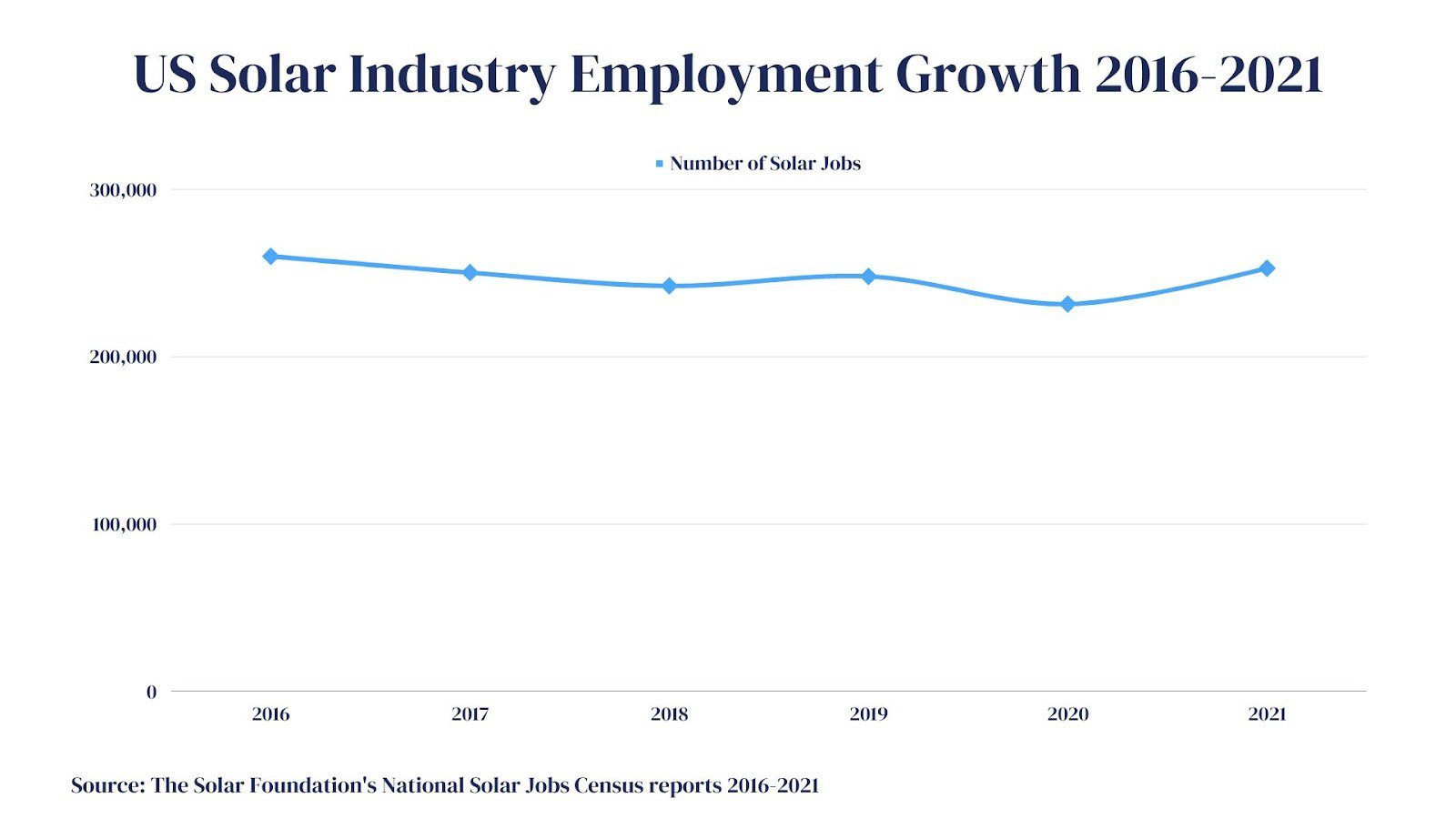Environmental sustainability has become an urgent priority for businesses worldwide. With rising expectations from consumers, regulators, and employees to address climate change, organizations are exploring renewable energy solutions to align operations with sustainability goals and reduce their carbon footprint. Solar energy has emerged as a formidable option for businesses to transition towards clean energy while driving positive environmental impact.
Aligning Solar Adoption with Corporate Sustainability Goals
For companies crafting their environmental sustainability plans, solar energy is proving to be a strategic imperative. Research indicates that solar technology, which does not produce air pollution or greenhouse gasses, can significantly reduce an organization’s carbon emissions.
A UN report approved by 195 governments and based on 14,000 studies, confirms human activity as the dominant cause of climate change. This underscores the need for businesses to act decisively through clean energy adoption. Solar arrays at company facilities or distribution centers can displace carbon-intensive grid electricity while significantly offsetting CO2 emissions. Companies in industries with large real estate footprints and distribution networks stand to gain massively by embracing solar technology. For organizations setting science-based emissions reduction targets, on-site solar energy systems will be pivotal in meeting those sustainability milestones.
The Economic and Social Benefits of Solar Energy Adoption
Solar energy offers compelling financial advantages in addition to environmental gains. The International Energy Agency declared solar power the most affordable electricity source globally. The rapidly declining prices, improved efficiency, and accelerated return on investment makes it a lucrative clean energy solution. Businesses can benefit from lower and predictable electricity bills by adopting solar through reputable commercial solar services for business.
The passive income from commercial solar projects also delivers attractive financial yields. Moreover, solar energy adoption accelerates local job creation and economic development. The solar workforce expanded by 9% in 2021, employing over 250,000 people in the U.S. alone. However, lower-income groups still lack adequate access to clean energy. Businesses have the opportunity to advance equity and social justice by directing investments into solar projects benefiting disadvantaged communities.
Navigating the Regulatory Landscape in Solar Adoption
With impending climate risk disclosure requirements and carbon accounting regulations worldwide, navigating policy frameworks will be crucial as businesses embark on their solar journeys. In the U.S., the Securities and Exchange Commission (SEC) plans to propose rules for climate risk disclosure and mandatory sustainability reporting for publicly listed companies by 2023.
The EU taxonomy for sustainable investments and carbon accounting standards will also impact companies operating in Europe. Proactive adoption of solar technology enables businesses to align operations with imminent regulatory requirements while harnessing available clean energy incentives. Policy mechanisms like solar Renewable Energy Credits provide additional revenue streams. Understanding local policies also allows project owners to choose optimal financing routes including direct purchase, leasing, and Power Purchase Agreements.
Advancing Social Justice and Equity through Solar Initiatives
Corporate solar adoption can also create ripple effects that advance societal goals. Businesses can drive change by directing investments into solar projects benefiting marginalized communities lacking clean energy access. Setting up solar microgrids and storage solutions in remote villages enables access to electricity for healthcare, education, and powering local businesses.
Consumer goods giant Unilever partnered with Acumen to provide equitable access to clean energy across 10,000 shops in remote communities. Such initiatives uplift local economies while empowering women entrepreneurs. Companies can also contribute through community solar programs benefiting low-income households. Social justice goals integrate effectively with sustainability initiatives through equitable solar access.
Fostering Economic Development with Solar Energy
Expanding solar adoption creates local employment and spurs economic growth. According to The Solar Foundation’s National Solar Jobs Census 2021, America’s solar industry employs over 250,000 solar workers nationwide, an increase of nearly 9% from 2020. Solar projects located in rural areas rather than population hubs create 2.5x more jobs.
States with a robust solar footprint witness economic development in small towns and rural counties, reviving distressed municipalities. For businesses, on-site solar projects create local construction and maintenance jobs. Buying solar products and services from minority-owned, women-owned, or veteran-owned businesses supports economic inclusion. Companies also finance job training programs, especially for members of marginalized groups, creating pathways to solar industry careers. Such initiatives compound the economic impact of solar adoption.
line chart displays data from The Solar Foundation’s National Solar Jobs Census, showing the total number of solar jobs in the United States from 2016 to 2021. The data depicts consistent job growth in the solar industry over the past 5 years, with over 250,000 solar workers employed nationwide as of 2021. This reinforces solar energy’s positive impacts on creating local jobs and driving economic growth.
Practical Steps for Businesses to Achieve Sustainability Goals with Solar
For companies seeking to integrate solar solutions with their sustainability vision, here is a practical roadmap:
- Energy audit: Assess current energy consumption patterns across facilities and identify optimization areas. This allows for determining solar capacity needs.
- Study incentives: Research federal, state, and local policies related to commercial solar. Factor available tax credits, rebates, and incentives into project planning.
- Choose business model: Explore if direct purchase, solar leasing or Power Purchase Agreement works best based on capital availability and goals.
- Select installer: Do thorough due diligence to choose a reputable solar installer with a proven track record. Local installers often provide better support.
- Monitor impact: Track greenhouse gas reduction and other environmental metrics pre and post-installation. Iterate based on data.
- Community initiatives: Invest surplus solar capacity in marginalized neighborhoods or donate solar panels to nonprofits to magnify sustainability impact.
Success Stories: Effective Corporate Solar Adoptions
Let us look at some inspiring examples of companies leveraging solar technology to accelerate their sustainability journey:
- IKEA: The furniture giant installed solar arrays in 90% of its U.S. locations in 2016, generating 40 MW of solar capacity. This helped IKEA exceed its 2020 emissions reduction target 4 years ahead of schedule.
- Amazon: In 2020, Amazon became the largest corporate buyer of renewable energy globally. It has installed over 100 solar installations on fulfillment centers and AWS data centers with 15.7 GW solar capacity contracted to date.
- Anheuser Busch: The beverage company recently announced completing its purchase of solar energy from the Ford Ridge Solar project, bringing its total contracted utility-scale solar projects to 14, spread across 7 states.
These examples validate solar energy’s effectiveness in helping businesses achieve emissions reduction targets while yielding financial gains.
Conclusion
Solar energy adoption is proving to be a competitive advantage for forward-thinking companies to advance their sustainability goals through reduced emissions. But equally importantly, solar projects unlock financial savings, deliver community benefits, and accelerate economic growth. With solar energy’s potential now proven, and climate risks becoming imminent, the time is ripe for businesses to amplify their solar capacity. Companies that strategically integrate solar solutions into their operations are poised to reap the environmental, social, and economic gains of the global clean energy transition.
Frequently Asked Questions
How can installing solar panels help my business save money?
Solar panels can significantly reduce your business’s electricity bills by generating your own renewable power. Federal tax credits and additional state/local incentives can further lower costs. Long-term budget stability is possible with predictable solar energy cost
What are the main options for businesses to adopt solar technology?
The three most common models are direct purchase and installation of solar panels, solar leasing from a provider, or entering a Power Purchase Agreement (PPA) for solar energy delivery. Each option has different upfront costs, maintenance, and economic considerations that businesses should evaluate.




































